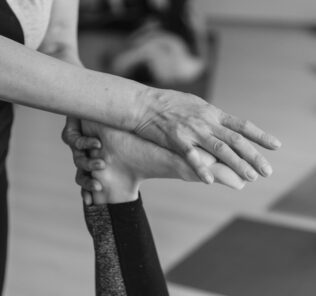How to Maximize the Impact of Interdepartmental Clinical Simulation
Healthcare simulation is the perfect modality for healthcare staff to plan and practice to hone skills for real-life trauma events. Every day across the globe, large scale real-life events of multisystem trauma occur and present in trauma center hospitals. These events are large scale and incredibly complex. These events have a lot at stake, and time is critical. Healthcare simulation provides the ability to practice in a safe environment before being required to perform during a high-stakes event. This HealthySimulation.com article by Erin Carn-Bennett, MSN, RN, will explore what interdepartmental clinical simulations are, tips for success, and why they matter so much.
Interdepartmental Clinical Simulation
Interdepartmental clinical simulation refers to a healthcare simulation that involves multiple separate teams across an organization that gather to partake generally in a large scale clinical simulation to add depth to learning. The most common form of interdepartmental simulation involves major trauma or multiple casualties within the emergency department, which will be the focus of the article.
Sponsored Content:
Interdepartmental clinical simulations are incredibly valuable to healthcare teams but are time and resource intensive to prepare and complete. However, this should not put clinical simulation staff off from the decision to try and organize an interdepartmental clinical simulation, as the benefits are worth the effort. The benefits of interdepartmental clinical simulation are incredibly vast for all involved.
Interdepartmental and interprofessional clinical simulation involves multiple clinical teams to come together to plan the event. Then the large scale simulation will allow these participants to spend time together to train and improve their clinical, communication, and teamwork skills. The volume of staff involved can be massive, and often the team members may not know each other or the skill sets they bring into their roles in the resuscitation.
Trauma Simulation Example
Effective systems for trauma patients train individuals’ clinical skills and teamwork behaviors to improve patient outcomes. Healthcare workers are presented with incredibly challenging situations such as complex multi-trauma resuscitation. Teamwork behaviors and organizational cultures are related to healthcare performance, but this is complex. Relational elements that can be practiced in clinical simulation and improve outcomes are shared goals and knowledge and mutual respect. Interdepartmental clinical simulation is a great opportunity to build relational elements across multiple teams in an organization and create more human connections across departments, which enables the breakdown of stereotypes within professions. For example: Instead of a preconceived stereotyped view of a surgical colleague within that subspeciality that presents to a large scale trauma event; they now become a colleague that participants have been vulnerable in debrief alongside. There is the chance to build connections within the morning tea break and learn more about them as a human outside of work. According to Brazil et al (2019) this fosters a more humanized connection between colleagues rather than a stereotyped dehumanized view. (Brazil, Purdy, Alexander et al. 2019).
Sponsored Content:
There is something quite phenomenal about the fact that multiple teams can come together in a significant event with many team members who may not actually know each other yet work together to save a person’s life. This is why there is worth in the investment in time to prepare and undertake an interdepartmental clinical simulation to grow and foster these relationships.
When a decision is made to plan for an interdepartmental clinical simulation, there needs to be representation from all teams involved. Allow adequate time to prepare for the event to occur. This is possible with enough time put in, dedication, and effort. Realistically at least three months is required to put such a large scale event together.
Steps to Development of Interdepartmental Clinical Simulations
The first step before emailing invitations to teams is to decide what type of clinical simulation case the scenario will be and which teams from the organization will be invited to the event.
Schedule regular meetings with both in-person and online options for attendance. Use documents to plan when tasks will be completed and assign tasks to individuals or groups of staff members.
Be tactical in who is selected for debriefing the interdepartmental simulation. Ensure that there is representation in the debrief from each participating specialty. This may mean that there are up to three or more debriefers, dependent on the size of the interdepartmental simulation.
An interdepartmental clinical simulation is the time to pull out all the stops to create as much realism and fidelity as possible. Use the highest level fidelity manikin that there is access to in the organization and appropriate to meet the objectives in the scenario. Plan for an experienced clinical simulation technician to be the technician for the higher fidelity manikin on the day. Use relevant features from the high-fidelity manikin for the case to increase realism.
A large scale interdepartmental simulation is the time to go all out on moulage in clinical simulation. Identify and enlist team members who are resident moulage experts to be involved in preparation for the day and the clinical simulation. There may need to be a consideration for a moulage mini team within the faculty if the moulage is very complex. There may not be any moulage experts available in the institution organizing the interdepartmental simulation. There are many resources available online on social media and YouTube which can aid interested staff members in effective moulage effects to the interdepartmental clinical simulation.
View the HealthySimulation.com LEARN CE/CME Platform Webinar Ouch! An Introduction on How to Create Realistic Trauma Moulage to learn more!
Moulage and props to consider may include the use of a bleed mat, bleeding chest drains to demonstrate haemothorax, bullet hole wounds that ooze, and compound fractures exposed or underneath dressings and bandages. Other considerations will be the availability of units of moulage blood to be delivered to the patient. Ensure that there is enough available for participants and that required materials will stay supplied on the day.
If the interdepartmental clinical simulation patient will require a blood transfusion in the clinical simulation, ensure a clear plan for participants is in place. This would include other relevant services and departments, such as the blood bank. Be sure in the pre-brief to participants to give all relevant information around expectations for how to make phone calls and actions that could be required in the simulation.
In the faculty debrief at the end of the interdepartmental clinical simulation, involve all services and departments to provide holistic feedback on how participants performed related to policy and flow. The debriefing is a time to make sure multiple perspectives from each discipline and department’s view are explored. The information gained in the debriefing and feedback can be incorporated into simulation revisions and any process changes that need to be evaluated.
This article has discussed why interdepartmental clinical simulations are an important mode of clinical simulation delivery for organizations to consider. Though there is a lot of preparation time and resources required for this type of clinical simulation to go ahead, the benefits in terms of connections across departments in a relational sense to improve the future care of patients makes interdepartmental clinical simulation incredibly valuable.
Learn More About How to Develop a Mass Casualty Incident Simulation!
Erin Carn-Bennett is a Simulation Nurse Educator for the Douglas Starship Simulation Programme in Auckland, New Zealand. Carn-Bennett has her Masters of Nursing and has an extensive nursing career within pediatric emergency and also nursing management. She is passionate about debriefing and all things simulation. Carn-Bennett is a member of the IPSS board of directors. Carn-Bennett is the lead host of the podcast Sim Nurse NZ.
Sponsored Content:


















